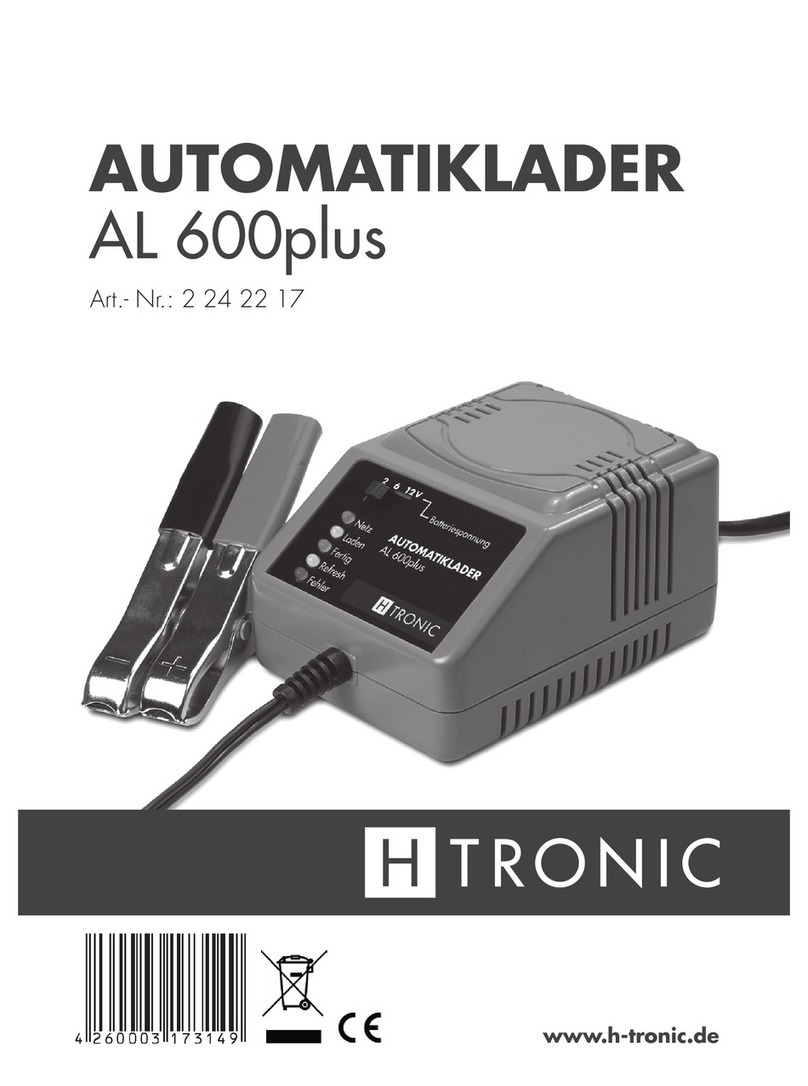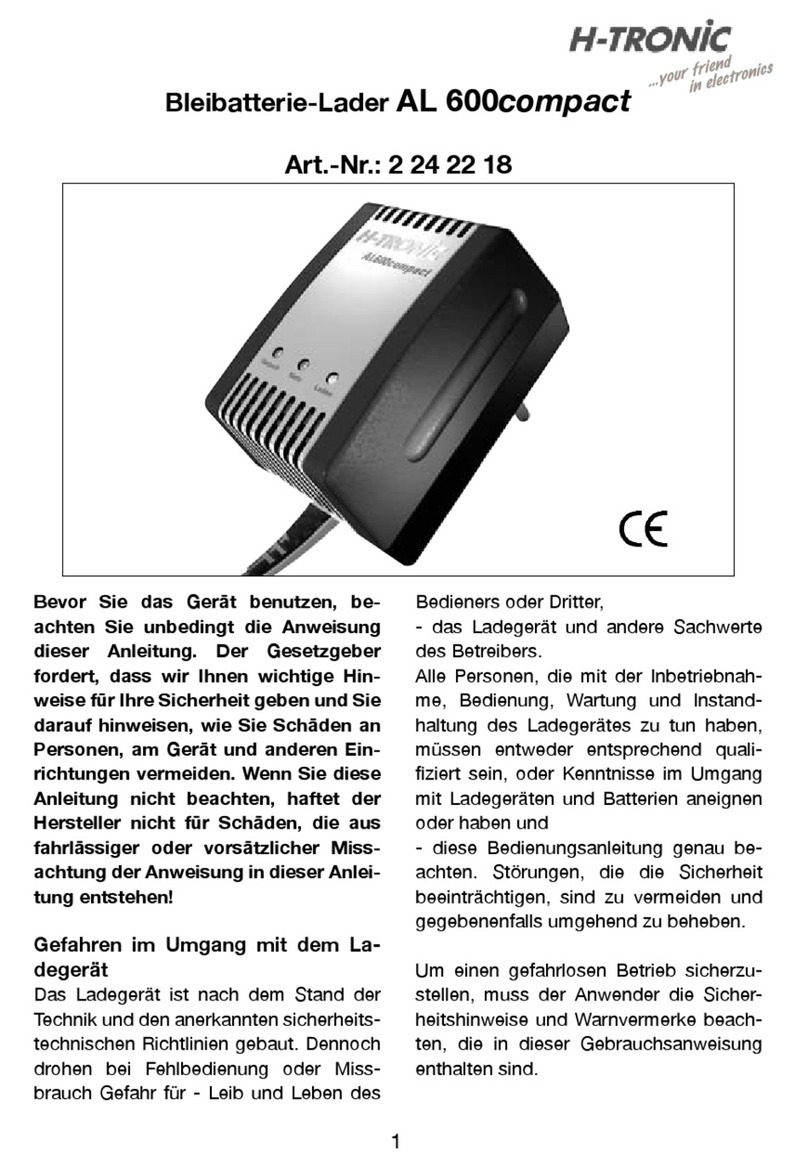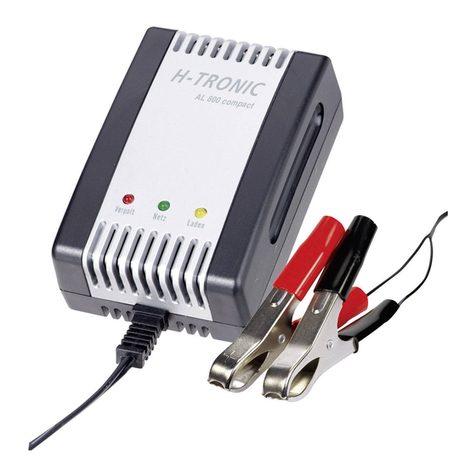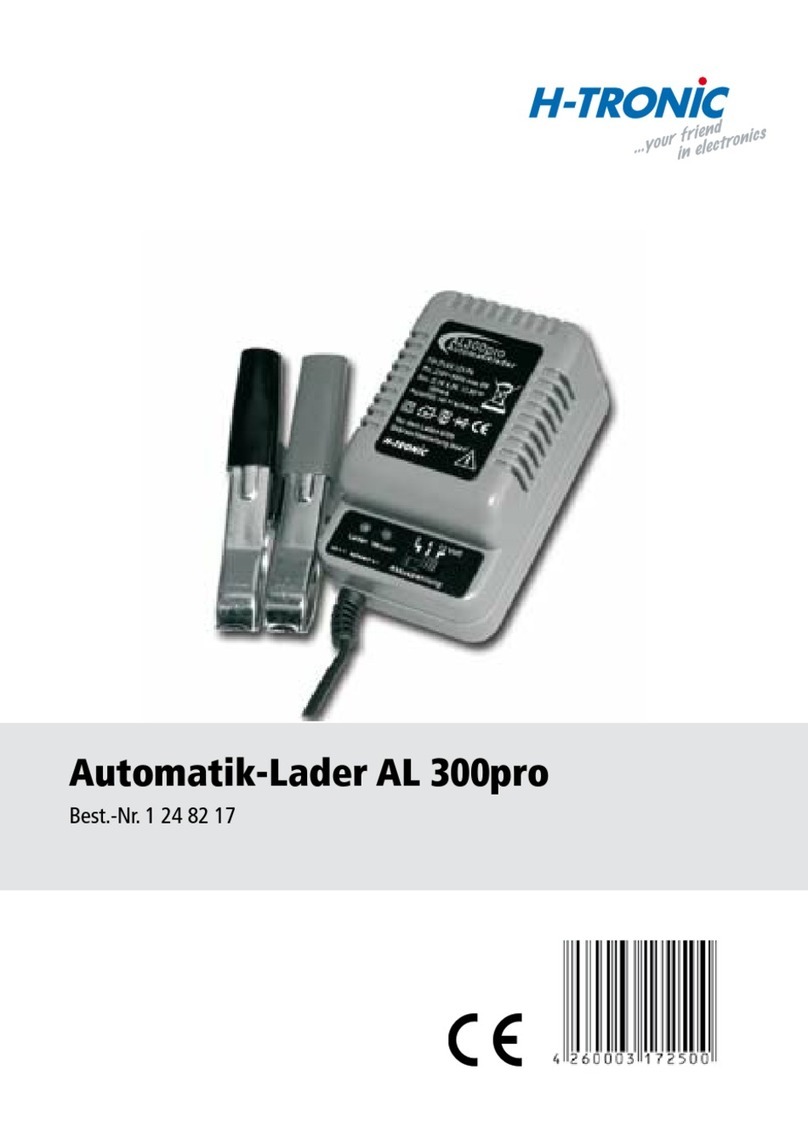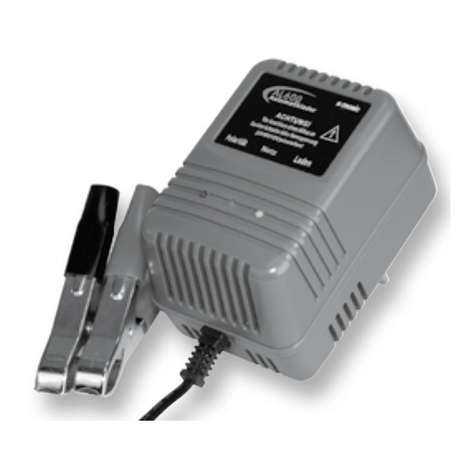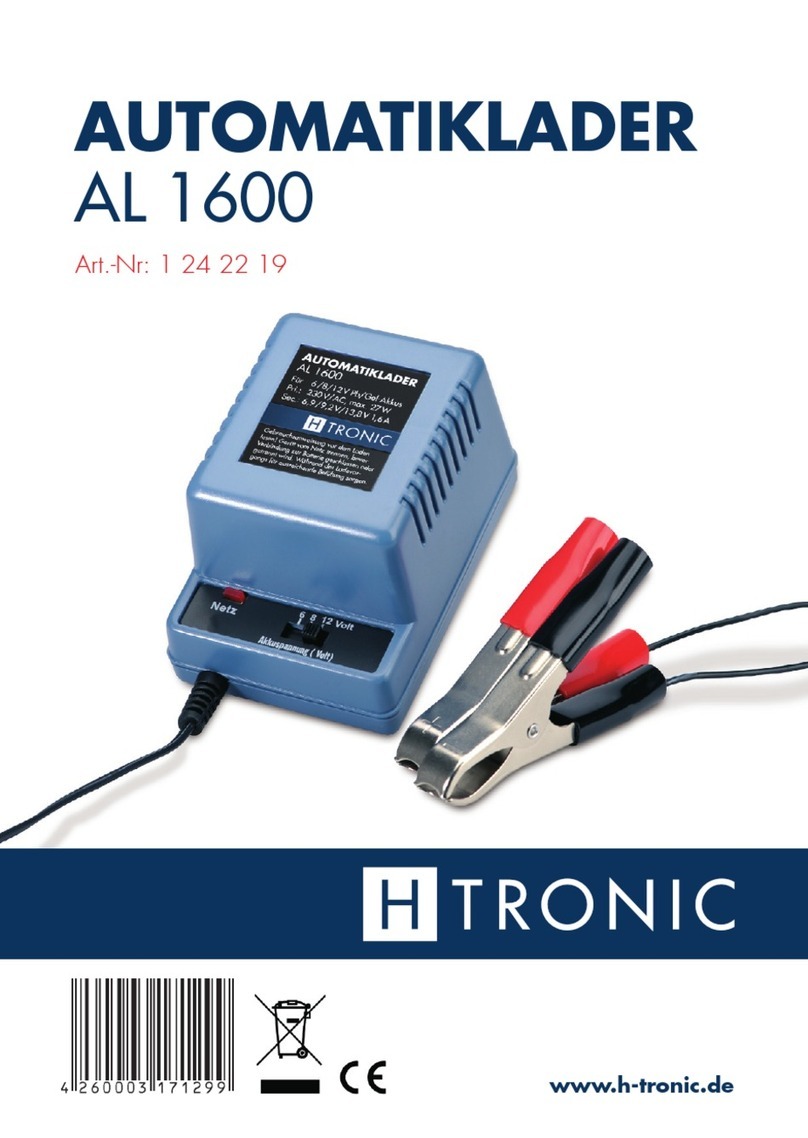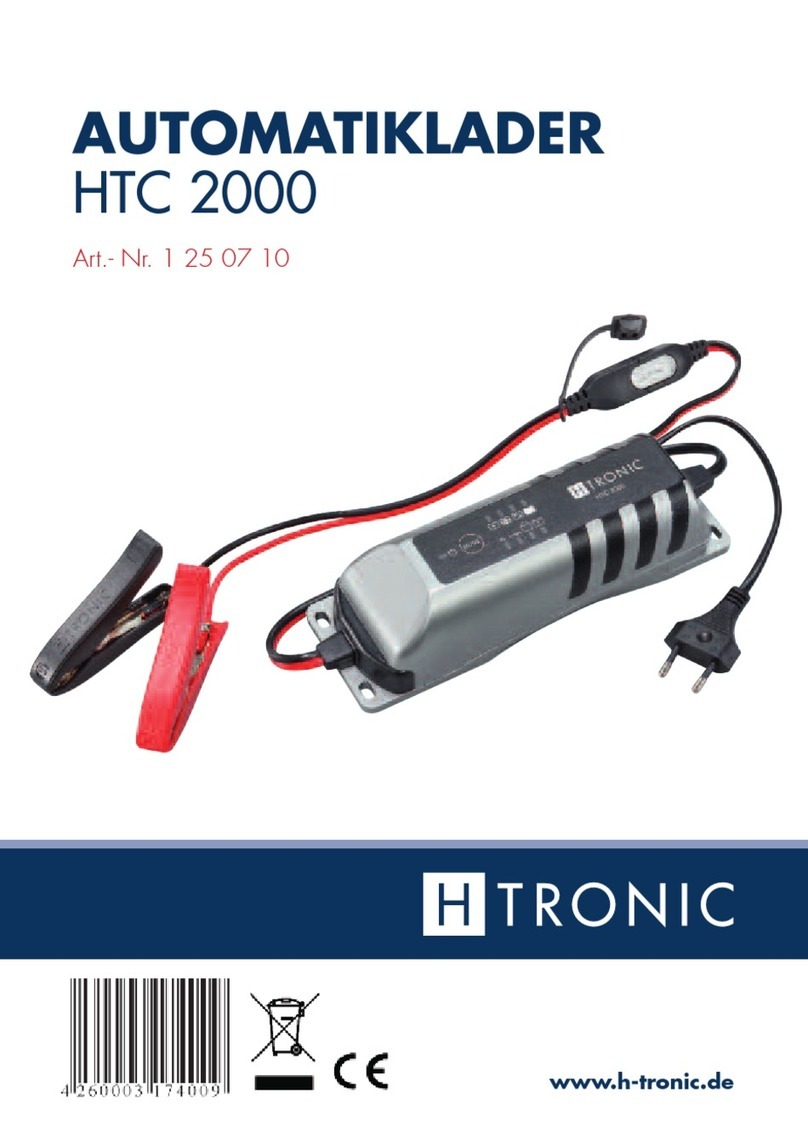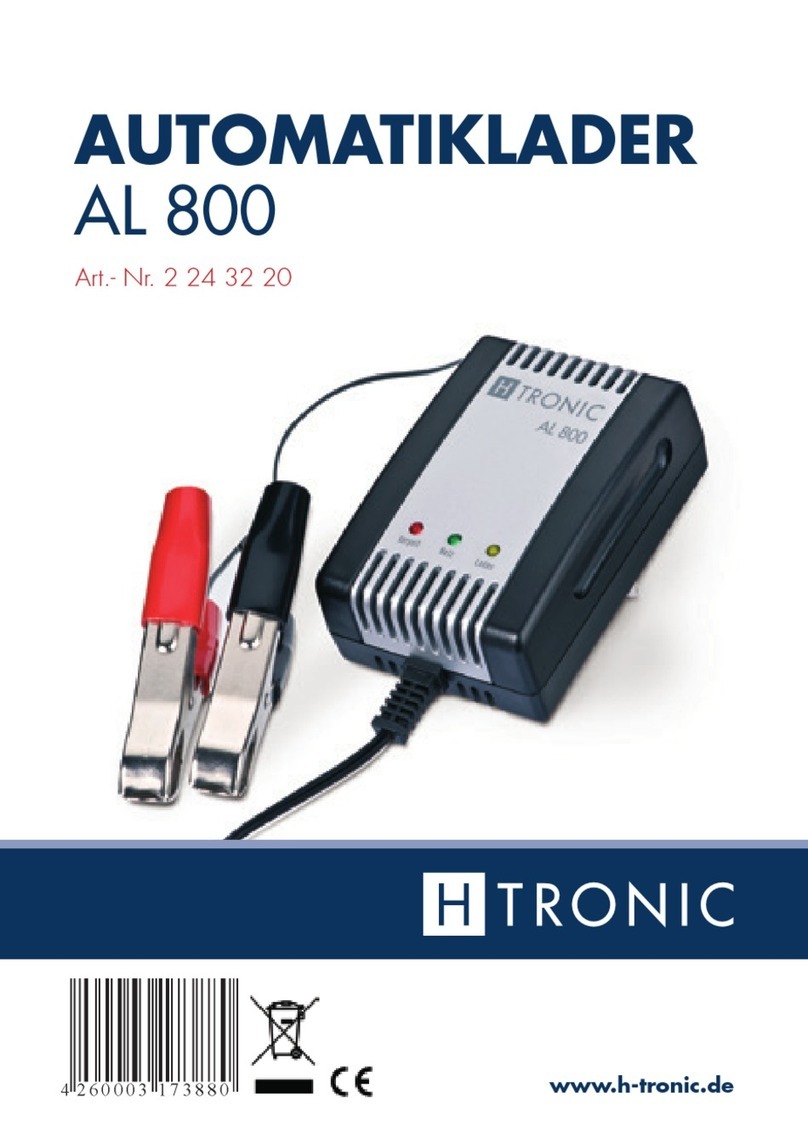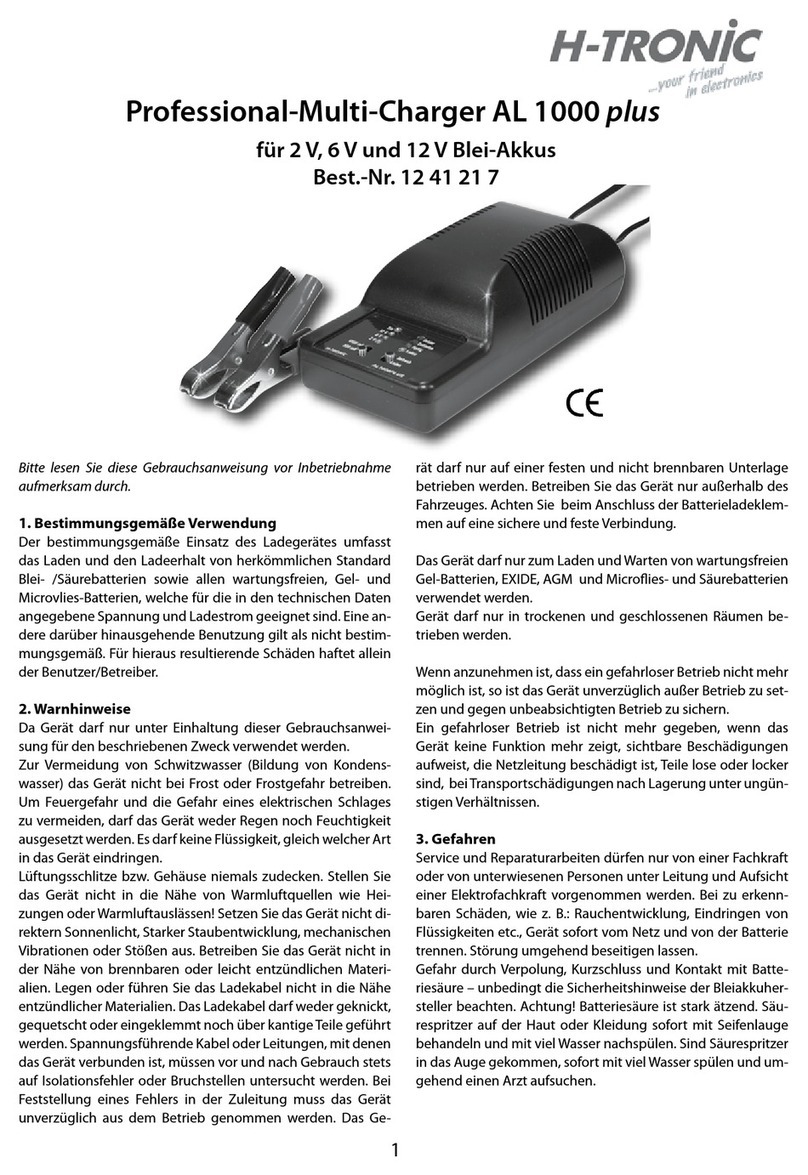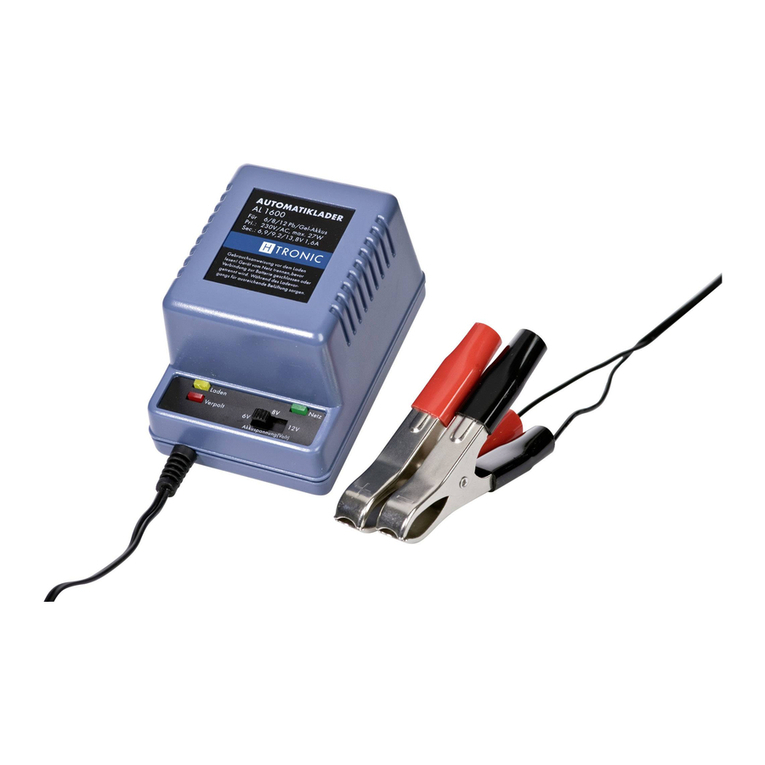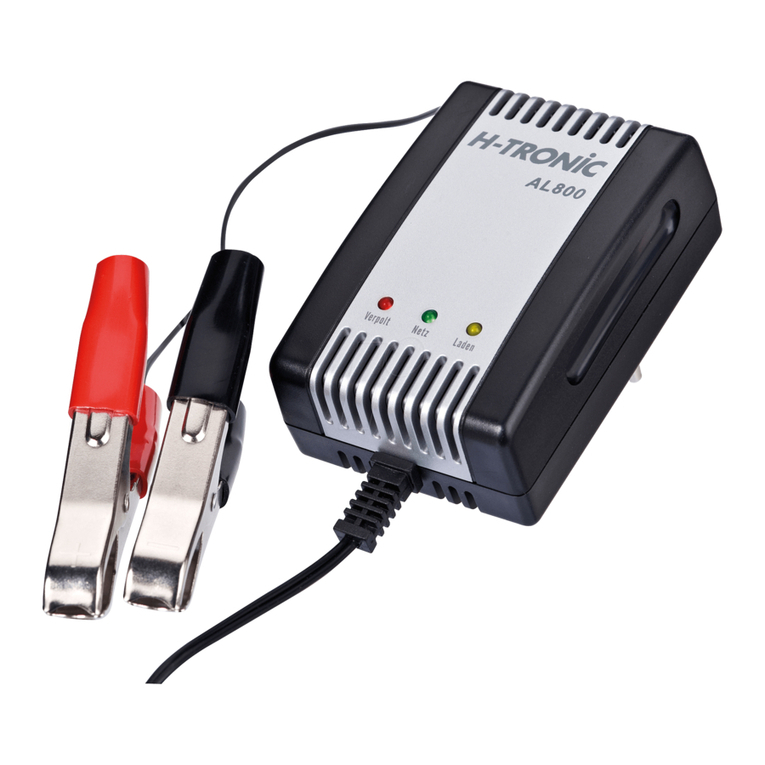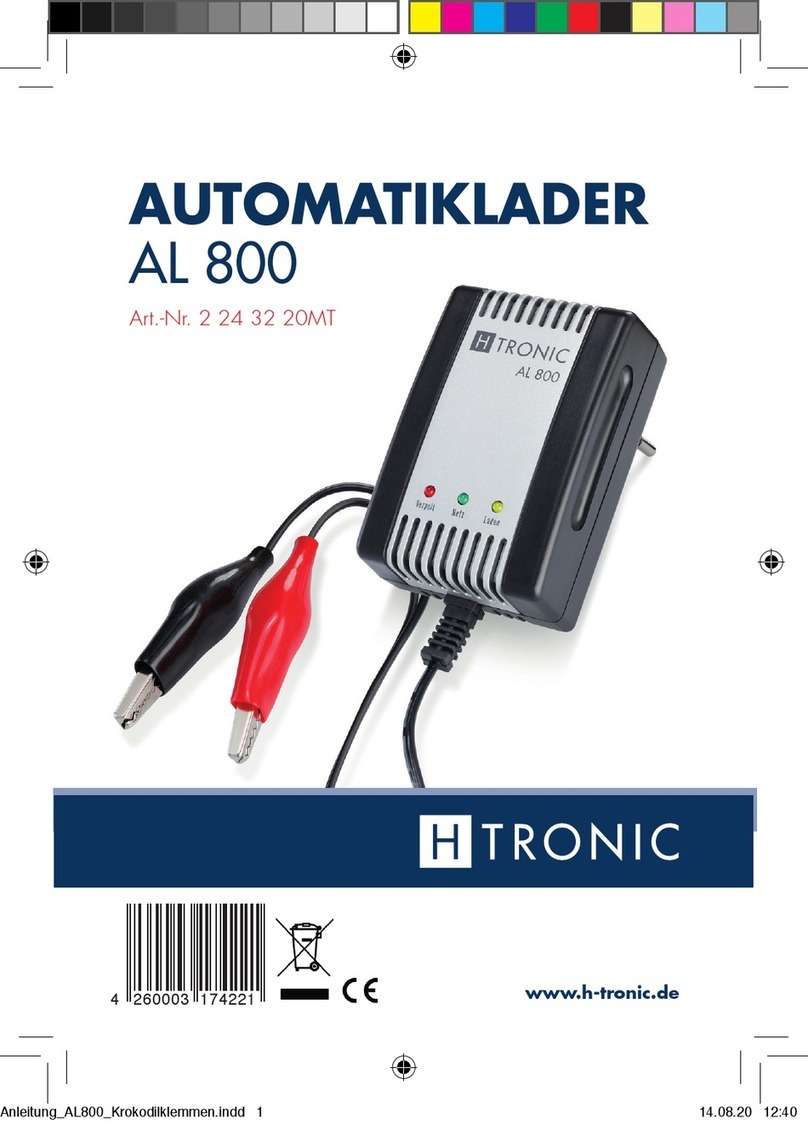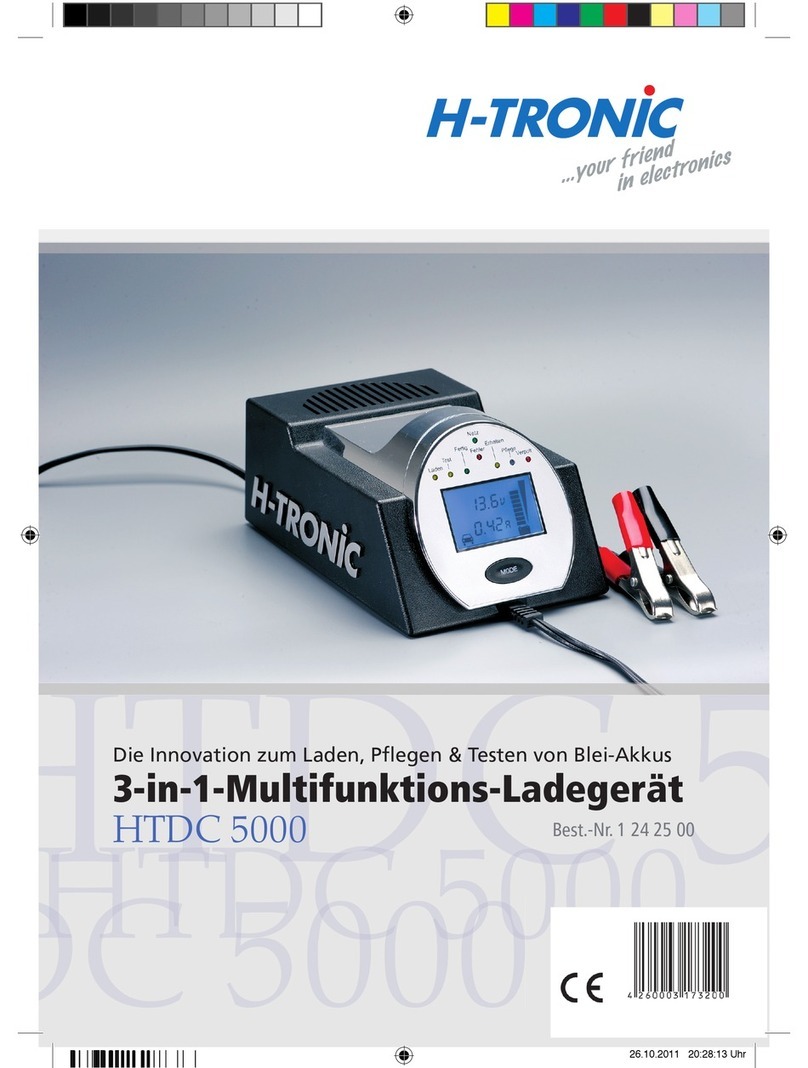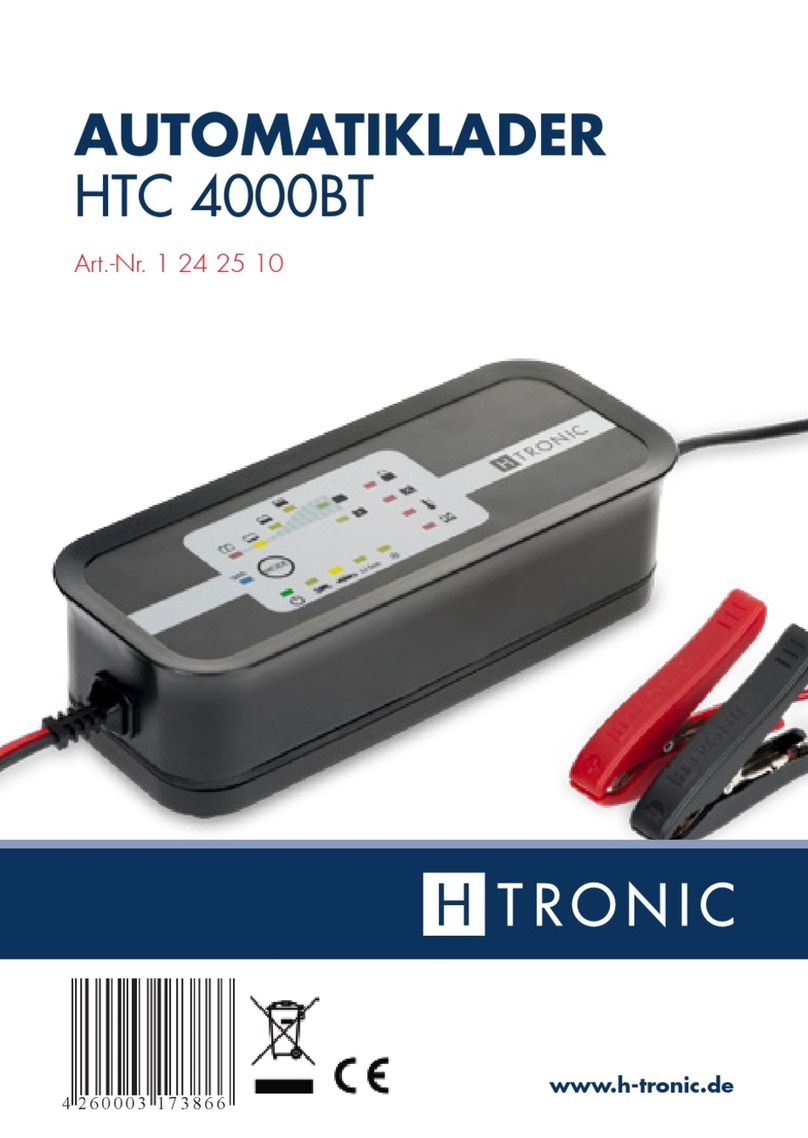Detach the battery first and only then interrupt the operating voltage.
When using products that get in touch ith electric charge, the valid VDE-regulations, especially
VDE 0100, VDE 0550/0551, VDE 0700, VDE 0711 and VDE 0860 must be complied ith.
Before opening the device, pull out or secure the mains plug first so the device is dead.
If the existing manual does not clarify electric properties for the non-commercial end consumer, a
tradesman must be asked for advice.
Ask a qualified person for advice if you are in doubt about the mode of operation or the safety of
the product.
. Generally, check if this product is basically appropriate for the intended use, before using the
device. If in doubt, take the user manual into consideration of the respective product (e.g. the
product/ vehicle to be charged or the specifications of the battery manufacturer).
Please consider that operation and connection faults are beyond our sphere of influence.
Understandably, e cannot assume liability for defects resulting from this.
Safety instructions
For reasons of safety and approval (CE) arbitrary rebuilding and/ or modification of the product is
not allo ed.
• The device must not be exposed to extreme temperatures, strong vibrations or strong mechanic
demands. This ill damage the product.
• Handle the product carefully, thrusts, blo s and dropping from even little height ill cause
damage. A faulty device must no longer be used and must therefore be disposed of.
• Use the device only for designated lead batteries.
• Do not leave packaging lying around; It can become a dangerous toy for children. Danger of
suffocation!
• This product is not meant for playing, it must be kept a ay from children. Children are not able to
estimate the danger hen dealing ith electric devices.
Before initial operation:
Before each initial operation, check the charger as ell as its leads for damages.
Do not start using the device under any circumstances if the protecting insulation of the mains or
charger leads is damaged (squashed, ripped do n or ripped off).
Never ork ith the charger in spaces or unfavourable environment conditions that contain or may
contain inflammable gases, smoke or dust.
Never cover ventilation slots or containers. Do not place the device near hot air sources such as
radiators or similar. Do not expose the device to sunlight, strong dust formation, mechanic
vibrations or thrusts. Do not use the device near or on easily inflammable materials. If necessary,
use an appropriate non-inflammable basis (e.g. a big, thick all tile or flagstone).
Do not place or guide the mains or charger leads near inflammable materials.
Ensure that no inflammable objects ( ood, cloths, cleaning rags or similar) are placed near the
device. The mains or charger leads must not be modified, extended or shortened. In addition, the
leads must neither be bent, squashed nor be guided through square-edged parts.
Current conducting cables or leads that are connected ith the device, must be checked for
insulation faults such as points of rupture, squashing or bending before and after using the device.
